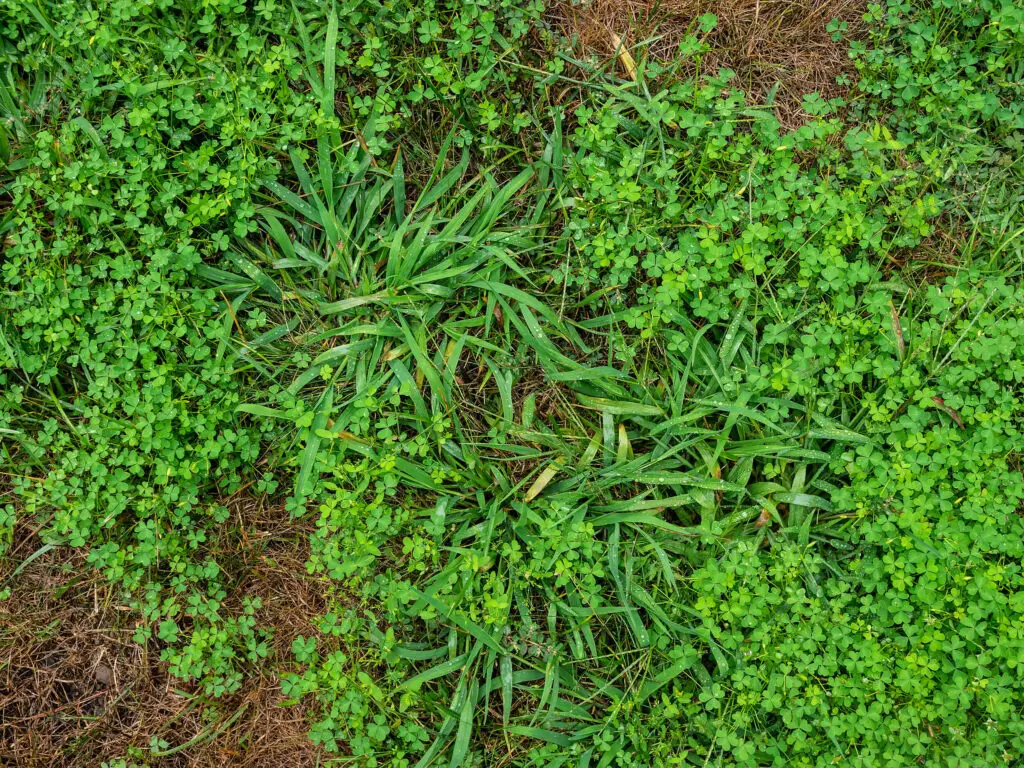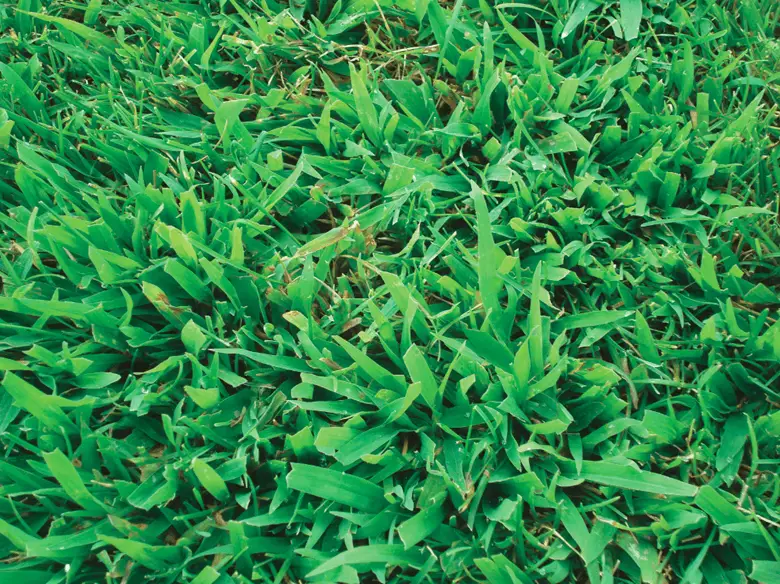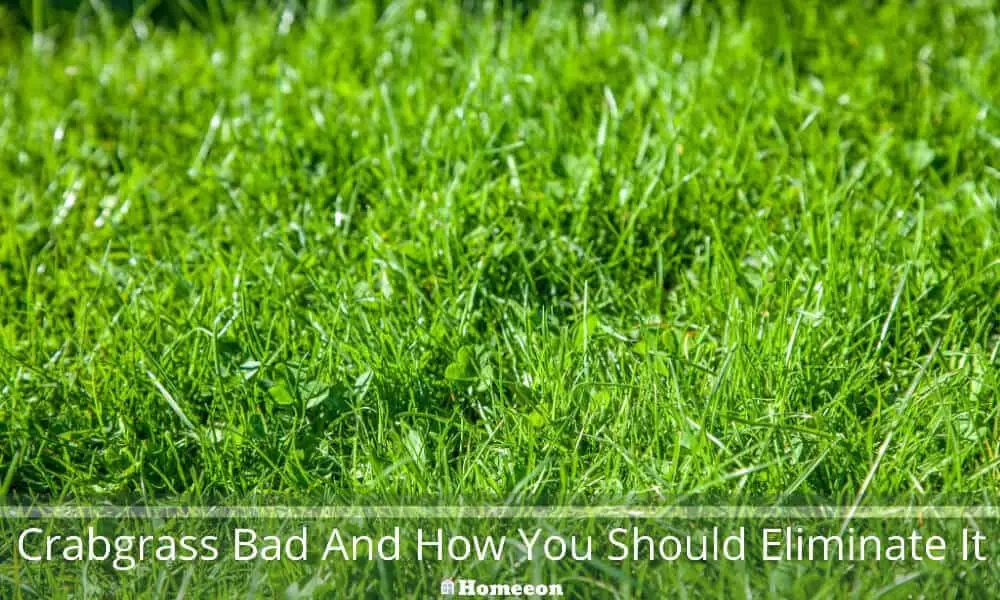Last Updated on August 14, 2023 By Emma W. Thomas
Crabgrass is undesirable as it competes with lawns for nutrients, water, and space, leading to a weakened turf. To eliminate it, use pre-emergent herbicides in early spring when soil temperatures reach 50-55°F (10-13°C). Regular mowing, proper watering, and lawn care help prevent its growth and spread.
Why Is Crabgrass Bad
1. Impedes Growth of Other Plants: Crabgrass is a robust annual weed that competes fiercely for water, sunlight, and nutrients with other desirable plants, especially lawn grass. Its rapid growth can suffocate and crowd out other vegetation, impacting the natural ecosystem and biodiversity in your garden.
2. Difficult to Control: The tenacious nature of crabgrass makes it incredibly hard to manage. A single crabgrass plant can produce up to 150,000 seeds throughout its growing season, which can infest a lawn for years to come. Even after the parent plant dies, the seeds can stay dormant for years before sprouting.
3. Aesthetic Problems: The texture and color of crabgrass are drastically different from most types of lawn grass. It grows faster and taller, which can detract from the uniformity and beauty of a manicured lawn or garden.
4. Encouragement of Thatch: Crabgrass contributes significantly to thatch – a dead layer of grass and roots that build up between the soil surface and living grass blades. Thatch can prevent moisture and nutrients from reaching the soil, causing other plants to weaken or die off.
5. Decreased Property Value: As crabgrass can degrade the visual appeal of a lawn or garden through its invasive growth and unsightly appearance, the property value might decrease if it is not properly managed or eliminated.
6. Water Consumption: Crabgrass is known for its ability to survive in harsh conditions, largely due to its extensive root system. This enables the plant to consume vast amounts of water, depriving other plants and further compounding its detrimental effect on your garden or lawn.
7. Breeds Insects and Diseases: Pests are attracted to lawns with thick thatch layers, which crabgrass can contribute to heavily. These uninvited guests are more than a nuisance; they tend to carry diseases that can further threaten the life of your desirable plants.
8. Hard to Eradicate Permanently: Despite mowing regularly and trying selective herbicides, eradicated crabgrass often tends to come back due to their deeply embedded seeds in the soil. It necessitates an ongoing weed management plan for control.
In summary, controlling crabgrass is crucial for the health of lawns and gardens due to these factors. Efforts should be taken to prevent its spread and eventually eliminate it.
How You Should Eliminate Crabgrass
Eliminating crabgrass can be a daunting task, but with the right steps, it can be done efficiently and effectively. Here is a list detailing methods to eliminate this persistent weed.
1. Maintain a Healthy Lawn:
Regular lawn care is the first and critical step in preventing crabgrass growth. A healthy lawn leaves less room for crabgrass to grow and thrive. This includes regular mowing, watering, and fertilization.
2. Use of Pre-Emergent Herbicides:
Pre-emergent herbicides are applied to the lawn before the crabgrass starts to germinate. They form a chemical barrier that restricts the growth of the seedlings. Timing is crucial when using these herbicides.
3. Use of Post-Emergent Herbicides:
Unlike pre-emergent, post-emergent herbicides are used after the crabgrass has germinated. These should be used sparingly as they can potentially harm other nearby plants.
4. Hand Pulling:
For smaller infestations of crabgrass, hand-pulling can be an effective solution. The key to hand pulling is to ensure the entire root system is removed to prevent regeneration.
5. Using Natural Methods:
There are numerous natural solutions to eliminating crabgrass such as vinegar sprays or corn gluten meal. These methods can be eco-friendly but require more applications than chemical treatments.
6. Over-seeding:
Over-seeding involves spreading grass seeds over your lawn, which assists in thickening your lawn and outcompeting any potential crabgrass.
7. Regular Aeration:
Aeration involves the process of creating small holes throughout your lawn to allow air, water, and nutrients to penetrate the grass roots more effectively, promoting healthier growth and discouraging weed growth.
Crabgrass elimination requires patience and persistence. With diligent maintenance and proper treatment, it’s possible to keep this invasive weed at bay and maintain a beautiful, healthy lawn year-round.
Why Do I Have Crabgrass In My Lawn?

Several factors attract crabgrass to grow on your lawn such as:
1. Bare Spots
Crabgrass thrives in any part of your lawn with bare soil and receives sunlight like driveway edges, tree lawns, and sidewalks. This problem could be prevented by seeding any damaged areas in the fall and early spring to cover bare spots and avoid crabgrass germination.
2. Frequent Watering
Your soil could have crabgrass seeds ready to germinate, and watering it every day will help them sprout. To prevent the roots from growing, don’t water your lawn more than twice per week but apply enough water to fill up a tuna can per session.
3. Mowing Too Short
Mowing your lawn too short will favor crabgrass and provide it with suitable conditions to thrive. Ensure that you cut the grass up to 3.5-4 inches high as tall grass shades your soil’s surface and blocks the necessary light for crabgrass to grow.
You can start mowing high in April to October then reduce the height before winter.
4. Suitable Weather Conditions
Perfect weather conditions such as rainy spring can help crabgrass germinate, and hot summer helps it grow. It is during such times when other grasses will go dormant. You can mow your lawn high and maintain thick grass.
5. Having Salty Soil On Your Tree Lawn
Crabgrass does well under salty conditions, and if you live in a salted area, your tree lawn risks having crabgrass. You can look for a liquid aeration service in the fall and spring to minimize the amount of salt in your soil. It is also advisable to seed bare areas in the fall and spring.
What To Do When You Have Crabgrass
There is nothing much that you can do once you have crabgrass on your lawn. But you can make your yard thick by seeding later in the summer to prevent crabgrass from coming back in the next season. Try also some of the following methods;
1. Minimizing Bare Spots And Thickening Your Lawn
Maintaining a healthy, thick lawn is one of the best defenses against crabgrass. Try seeding in the late summer to add modern grasses that will compete with crabgrass. If the problem is in your entire lawn, try slice seeding, but if it only patches, you can rough up the dirt and seed in the spring and fall.
2. Hand Pulling
If the crabgrass is manageable, try pulling it out by hand. Using weed-pulling equipment such as the weed-out could also work well. But if there is a lot of crabgrass on your lawn, you may have to live with it until next year and then prevent it.
3. Spot Chemical Spray
Some chemicals can work to kill crabgrass though they may not be entirely practical. If the crabgrass is already ugly and big, the chemicals will only turn it purple and uglier. You can allow it to wait till cold winter weather kills it.
4. Watering Properly
Water your lawn for two sessions per week in the next summer and spring to reduce crabgrass germination. Avoid frequent watering as this can promote the sprouting of crabgrass and other weeds.
5. Perfect Mowing Height
Always mow high to prevent weed seeds from sprouting.
When You Should Kill Crabgrass
It is suitable to apply the herbicide when the temperature of your soil rises above 60 degrees. You may not monitor the ground temperature, but you can notice the shrubs bloom and the trees bud. Warm nights and seasons of rainfall promote crabgrass germination, which is the ideal time to spray herbicide.
Is Crabgrass Good For Anything?
Crabgrass is among the world’s fastest-growing cereals and it is also nutritious. The plant produces edible seeds in 6-8 weeks and grows well in dry areas with poor soils in well-watered lawns. Crabgrass is a terrible weed but a fantastic edible.
Removing the husks from the grains is time-consuming, and one can pound the seeds in a mortar with sand the separate them. The seeds can also be popped over a flame and then pound to produce a toasted gain.
Crabgrass was cultivated as an essential food crop during the Stone Age in Switzerland, and it is a traditional food in Africa and India. This plant was introduced in the U.S. as forage for sheep, cattle, horses, and hogs and later made a main agricultural crop by the Department of Agriculture.
Crabgrass leaves were used to make paper, but most people tested allergic to the plant. If you don’t eat crabgrass seeds, you can eliminate them by mowing methods.
What Kills Crabgrass And Not Grass?
You can use a ready-to-use chemical like Scott’s spot weed control if there are a few crabgrass plants. The spray will destroy weeds and crabgrass including their roots without spoiling your lawn. Ensure that you follow the instructions.
How To Get Rid Of Crabgrass During Summer

Each year, crabgrass dies on its own in the fall, and it will disappear by winter. Here’s what to do to prevent its re-emergence;
- Uproot the plant with your hands and water the soil to loosen it if it’s hard
- Seed the lawn to fill bare spots but wait for about a month if you had used a weed killer
- Water your lawn deeply once or twice per week
- Mow your grass high (about three inches tall). Leave the clippings to add nutrients and shade for the soil
- Apply a pre-emergent next spring at the time your trees and flowers bloom
Crabgrass can be ugly on your lawn, and you need to follow the methods listed above to get rid of it. Ensure that you follow all the instructions carefully.
References:
https://www.southernliving.com/garden/weeds/crabgrass
https://www.groundsguys.com/blog/2022/may/what-is-crabgrass-and-why-is-it-bad-for-your-law/
Emma is a graduate of Domestic Science or Family and Consumer Sciences (Home Economics) from the University of Wisconsin. She has 7 years of experience Working with the strategic section of BestBuy and now writing full-time for Homeeon.
From Managing the Home, Interiors, Cleaning, and Exteriors to Gardening and everything about Making A Home Liveable – is her passion and this Homeeon is the result of this.
Emma loves decorating her home with the best stuff found online. She cares about quality over anything and writes reviews about them here in Homeeon. Get in touch with her over Pinterest.
Keep reading her blogs.

